Air and sea travel are pillars of global connectivity in the modern era. These modes of transportation have revolutionized the way people explore the world. They foster trade, tourism, and cultural exchange. Each offers a unique experience and presents distinct challenges, from the vast oceans to the endless skies. This comprehensive exploration delves into the intricacies of air and sea travel. It examines their histories, technologies, environmental impacts, and prospects.
A Historical Voyage: Tracing the Evolution of Sea Travel
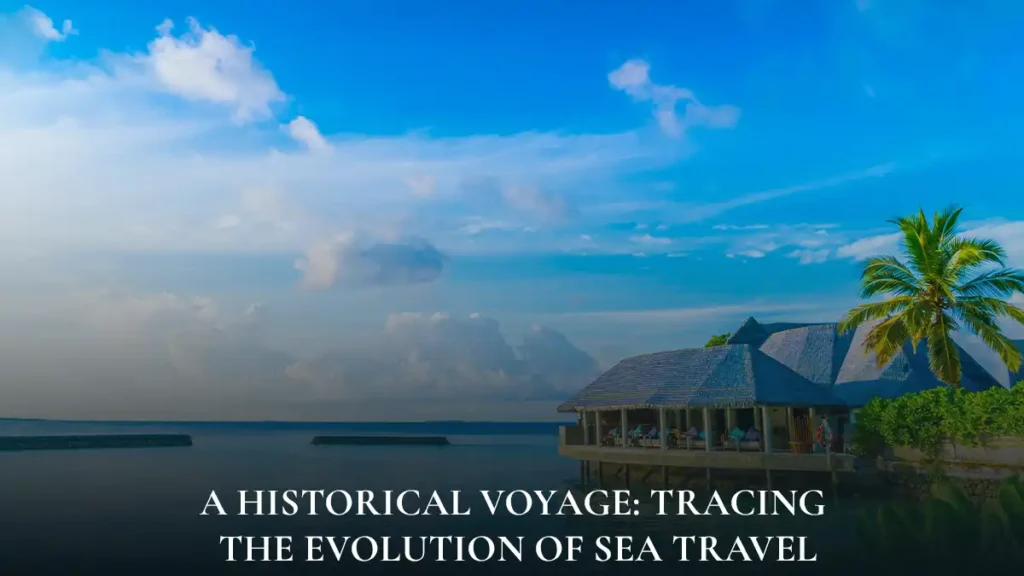

Sea travel has an illustrious history dating back thousands of years. Ancient civilizations relied on primitive vessels to navigate waterways for trade and exploration. The earliest known boats, crafted from logs or reeds, served as rudimentary means of transportation across rivers and coastal regions. As civilizations advanced, maritime technology evolved. It led to the development of more sophisticated sailing vessels, such as the Phoenician galleys and Greek triremes.
During the Age of Exploration in the 15th and 16th centuries, European sailors embarked on daring voyages to chart unknown waters. They discovered new lands and established lucrative trade routes. The advent of the Age of Sail brought forth majestic tall ships like the Spanish galleons and British clippers. These enabled global exploration and colonization.
The Industrial Revolution further revolutionized sea travel with the invention of steam-powered ships in the 19th century. It offered incredible speed, reliability, and efficiency. The maiden voyage of the RMS Titanic in 1912 marked the pinnacle of luxury ocean liners, albeit marred by tragedy.
In the 20th century, the rise of container shipping and oil tankers transformed the maritime industry. It facilitated the movement of goods and resources on an unprecedented scale. Modern vessels equipped with state-of-the-art navigation systems and propulsion technologies continue to ply the world’s oceans. They shape global commerce and connectivity in the 21st century.
Wings of Progress: The Invention and Development of Air Travel


The genesis of air travel traces back to the early 20th century, marked by the pioneering efforts of visionaries like the Wright brothers. In 1903, Orville and Wilbur Wright achieved the first powered flight in Kitty Hawk, North Carolina. They launched humanity into the age of aviation. Initially, aircraft were simple biplanes constructed from wood and canvas, with engines barely producing enough power for short, unsteady flights.
The First World War accelerated advancements in aviation technology, leading to the emergence of sturdier aircraft and aerial combat tactics. Post-war, commercial aviation began to take shape. Airlines offered passenger services on routes primarily within Europe and the United States.
The introduction of metal monoplanes and improvements in engine design occurred during the interwar period. They heralded a new era of safer and more efficient air travel. The iconic Douglas DC-3, introduced in the 1930s, revolutionized air transport with its comfort, reliability, and range.
The mid-20th century witnessed the advent of jet propulsion, exemplified by the groundbreaking debut of the Boeing 707 in 1958. This ushered in the era of commercial jet travel. Jetliners like the Concorde further pushed the boundaries of speed and luxury, albeit with limited commercial success.
Today, modern airliners boast cutting-edge technology. It includes fly-by-wire systems, composite materials, and fuel-efficient engines, making air travel safer, faster, and more accessible. The evolution of air travel stands as a testament to human innovation. There is a relentless pursuit of progress in conquering the skies.
Relentless technological innovation has propelled the airborne and maritime industries forward throughout history. Aviation advancements have focused on enhancing safety, efficiency, and passenger comfort. Introducing radar systems and navigation aids revolutionized air traffic control, ensuring safer skies for all.
Moreover, the development of turbojet and turbofan engines enabled faster and more fuel-efficient flights. It reduces travel times and environmental impact. Aircraft design has also evolved with the adoption of composite materials. It led to lighter and more aerodynamic structures.
Technological innovations have similarly transformed the landscape of seafaring in the maritime sector. The implementation of GPS navigation systems has revolutionized maritime navigation. It allows ships to pinpoint their exact locations with unprecedented accuracy.
Furthermore, automation and computerized systems have streamlined vessel operations, optimizing fuel consumption and minimizing human error. The integration of satellite communication systems has enhanced maritime safety. It facilitated real-time data exchange between ships and onshore facilities.
Autonomous vessels and electric propulsion systems are emerging technologies that promise to further revolutionize air and sea travel in the coming years. These advancements will drive efficiency and sustainability and open up new frontiers for exploration and commerce in the dynamic realms of air and sea.
Navigating the Blue Highways: Understanding Sea Routes and Navigation
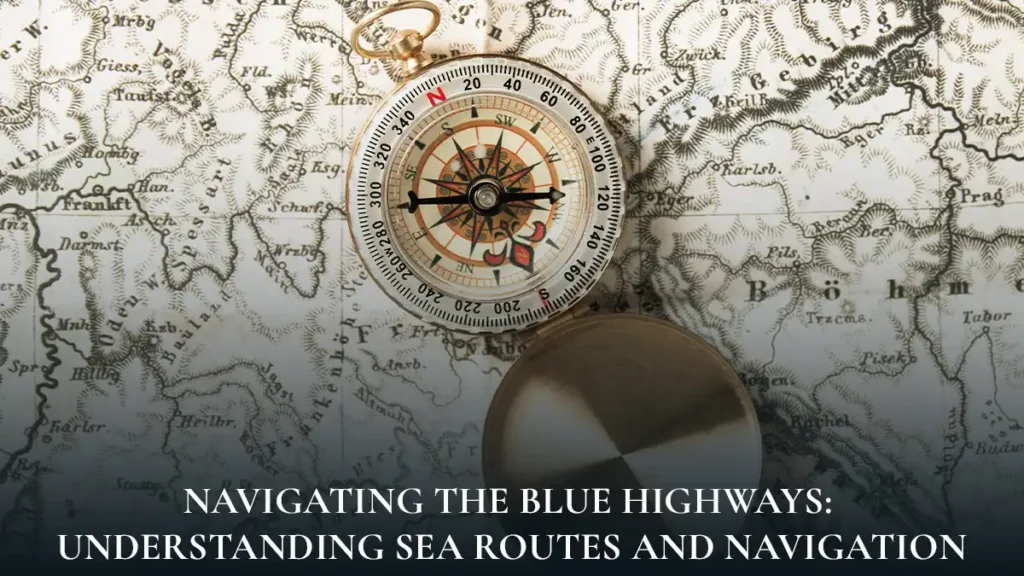

Navigating the vast expanses of the world’s oceans requires a comprehensive understanding of sea routes and navigation techniques. Mariners have long relied on celestial navigation. They used stars, the sun, and landmarks to determine their position.
Sea routes are carefully plotted paths that vessels follow to reach their destinations safely and efficiently. They are influenced by factors such as ocean currents, weather patterns, and navigational hazards.
Modern navigation relies heavily on electronic systems like GPS (Global Positioning System), which uses satellites to provide precise location data to ships. GPS has revolutionized maritime navigation, offering accuracy and reliability even in remote ocean areas.
Charts and nautical maps are indispensable tools for sailors. They provide detailed information about water depths, coastline features, and navigational aids such as buoys and lighthouses.
In addition to electronic aids, radar and sonar systems assist mariners in detecting other vessels, underwater obstacles, and changes in sea conditions.
Navigation also involves understanding international maritime regulations. It adheres to established road rules to prevent collisions and ensure safe passage for all vessels.
Overall, mastering the art of navigation is essential for mariners to navigate the blue highways effectively. This helps them safely reach their destinations across the world’s oceans.
From Runways to Jetstreams: The Mechanics of Air Travel


Air travel operates on a complex interplay of physics, engineering, and aerodynamics, showcasing the mechanics behind flight. At its core, flight relies on Newton’s third law, which states that for every action, there is an equal and opposite reaction.
The principle of lift, generated by an aircraft’s wings, allows it to overcome gravity and ascend into the sky. Wings are shaped to create a pressure difference between the upper and lower surfaces, generating lift as air flows over them.
Thrust, provided by engines or propellers, propels the aircraft forward, overcoming drag caused by air resistance. Jet engines compile incoming air, mix it with fuel, and ignite it to produce thrust.
Aircraft control is achieved through a combination of control surfaces, including ailerons, elevators, and rudders. These manipulate the airflow around the aircraft.
Navigation and guidance systems, such as autopilot and flight management computers, assist pilots in controlling the aircraft and navigating along predetermined flight paths.
Modern aircraft have advanced avionics and fly-by-wire systems, which use electronic signals to control flight surfaces. They enhance precision and responsiveness.
Understanding the mechanics of air travel is essential for pilots, engineers, and aviation enthusiasts alike. These highlight the intricate science behind human flight.
Safety and Security: Ensuring Passenger Welfare in Air and Sea Travels
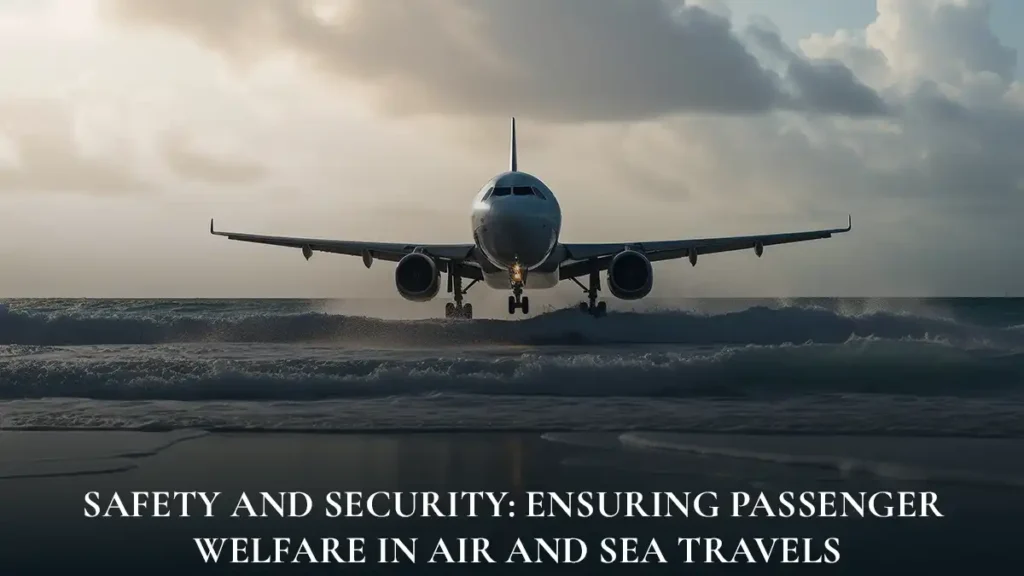

Safety and security are paramount considerations in air and sea travel, prioritizing passenger welfare. In aviation, rigorous safety protocols govern every aspect of flight operations, from aircraft maintenance to crew training.
Regular inspections, maintenance checks, and adherence to strict regulations ensure that aircraft remain in optimal condition for safe operation. Additionally, comprehensive training programs equip pilots and flight crews with the skills and knowledge to handle emergencies effectively.
The implementation of advanced safety features, including redundant systems and emergency procedures, further enhances air travel’s resilience.
Similarly, in the maritime industry, rigorous safety measures are enforced to protect passengers and crew members aboard ships and vessels.
Emergency drills, life-saving equipment, and strict adherence to international maritime regulations help mitigate risks. They ensure swift response in case of emergencies at sea.
Technological advancements, such as satellite communication systems and automated distress signals, have revolutionized maritime safety. These enable rapid coordination of rescue efforts and communication with authorities onshore.
Despite these measures, both air and sea travel carries inherent risks. Continuous efforts are there to enhance safety standards and address emerging threats.
The aviation and maritime industries prioritize safety and security measures to instill confidence in travelers and uphold their commitment to passenger welfare.
Environmental Concerns: Balancing Progress with Eco-consciousness


Addressing ecological concerns is paramount in the realms of air and sea travel. It necessitates a delicate balance between progress and eco-consciousness. Both industries significantly contribute to carbon emissions, atmospheric pollution, and marine ecosystem disruption.
Air travel emissions, mainly CO2 and nitrogen oxides, contribute to climate change and air quality degradation. Efforts to mitigate these impacts include the development of more fuel-efficient engines, alternative fuels, and operational efficiency improvements.
Maritime transportation similarly faces environmental challenges. Cargo ships and cruise liners emit sulfur dioxide, nitrogen oxides, and particulate matter. Ballast water discharge and oil spills also threaten marine ecosystems and biodiversity.
Regulatory bodies impose emission standards and implement pollution prevention measures to address these issues. In this way, they promote sustainable practices within the industries.
Technological innovations like hybrid and electric propulsion systems for ships and adopting biofuels in aviation show promise in reducing environmental footprints.
Additionally, there are initiatives like carbon offset programs and eco-friendly certifications. These aim to promote sustainability and environmental responsibility among travelers and transportation companies.
Achieving a harmonious balance between progress and eco-consciousness requires collaborative efforts from governments, industry stakeholders, and consumers. The goal is to ensure the long-term viability of air and sea travel while preserving the planet for future generations.
Cultural Significance: Exploring the Influence of Travel on Society
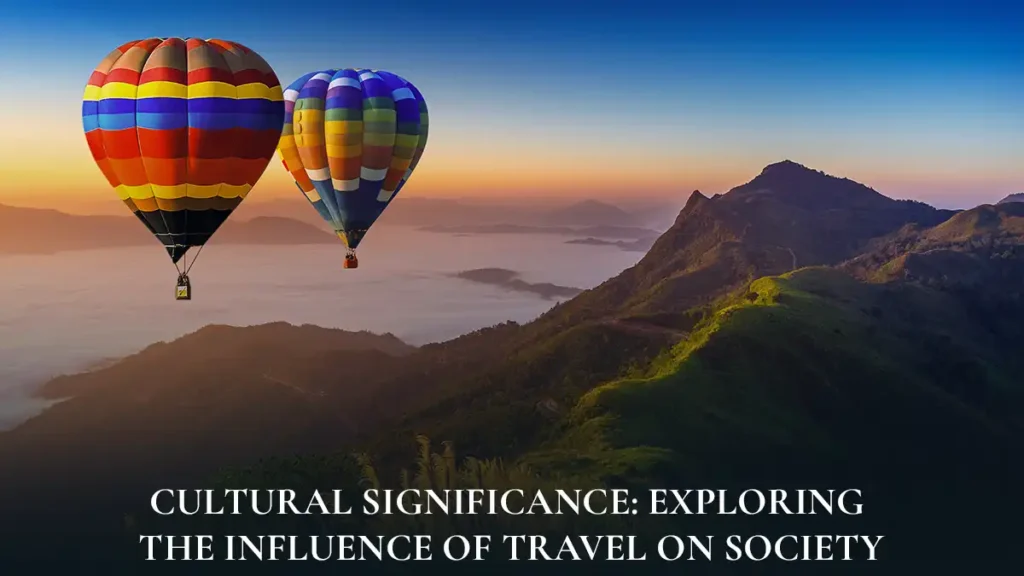

Exploring the cultural significance of travel unveils its profound influence on society. It fosters interconnectedness and understanding among diverse communities. Travel serves as a conduit for cultural exchange. It allows individuals to immerse themselves in new languages, traditions, and ways of life.
Interacting with people from different backgrounds gives travelers insights into varying perspectives and values. This fosters tolerance and appreciation for diversity.
Historically, trade routes facilitated the exchange of goods, ideas, and cultural practices, shaping civilizations and fueling economic growth.
Pilgrimages to sacred sites and cultural landmarks have long been integral to religious and spiritual practices. These foster a sense of connection to shared heritage and beliefs.
Tourism plays a pivotal role in promoting cross-cultural understanding and preserving cultural heritage. It generates revenue for local communities and supports cultural institutions.
The hospitality industry, including hotels, restaurants, and tour operators, is an ambassador of culture. It showcases local cuisine, traditions, and arts to visitors worldwide.
Cultural festivals, music, dance, and literature festivals attract travelers seeking authentic experiences and opportunities for cultural immersion.
In an increasingly interconnected world, travel continues to bridge cultural divides, foster dialogue, and promote mutual respect. It enriches the tapestry of human experience.
Economic Impacts: How Air and Sea Travel Drive Global Commerce
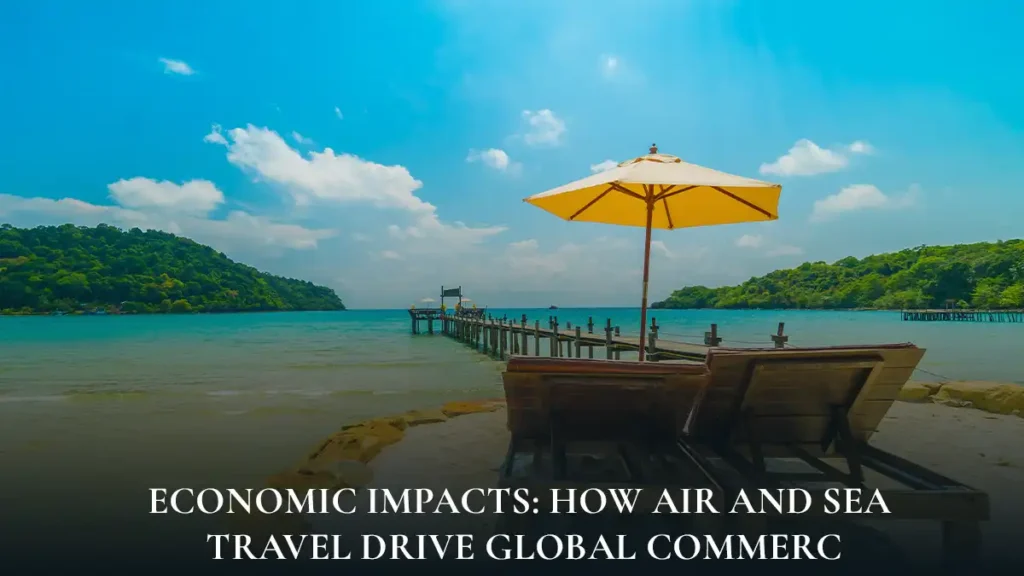

Air and sea travel play pivotal roles in driving global commerce. It facilitates the movement of goods, services, and people across vast distances. Air transportation expedites the delivery of time-sensitive goods, such as perishable goods and high-value commodities. It reduces supply chain lead times and increases efficiency.
Moreover, air cargo services enable businesses to access international markets quickly, facilitating trade and economic growth on a global scale.
On the other hand, sea transport remains the backbone of global trade, carrying the bulk of goods between continents. Container ships transport a wide array of products, including raw materials, consumer goods, and automobiles, at a fraction of the cost of air transport.
Ports serve as vital hubs of economic activity. They facilitate the loading and unloading of cargo, warehousing, and distribution.
The maritime industry also supports ancillary services such as shipbuilding, logistics, and marine insurance. It contributes to job creation and economic development in coastal regions.
Cruise tourism generates significant revenue for port cities and destinations. It bolsters local economies through visitor spending on accommodations, dining, and entertainment.
Overall, air and sea travel enables global commerce. They connect markets, foster international trade relations, and drive economic prosperity for nations and communities around the world.
Challenges and Solutions: Addressing Issues in Transportation Infrastructure
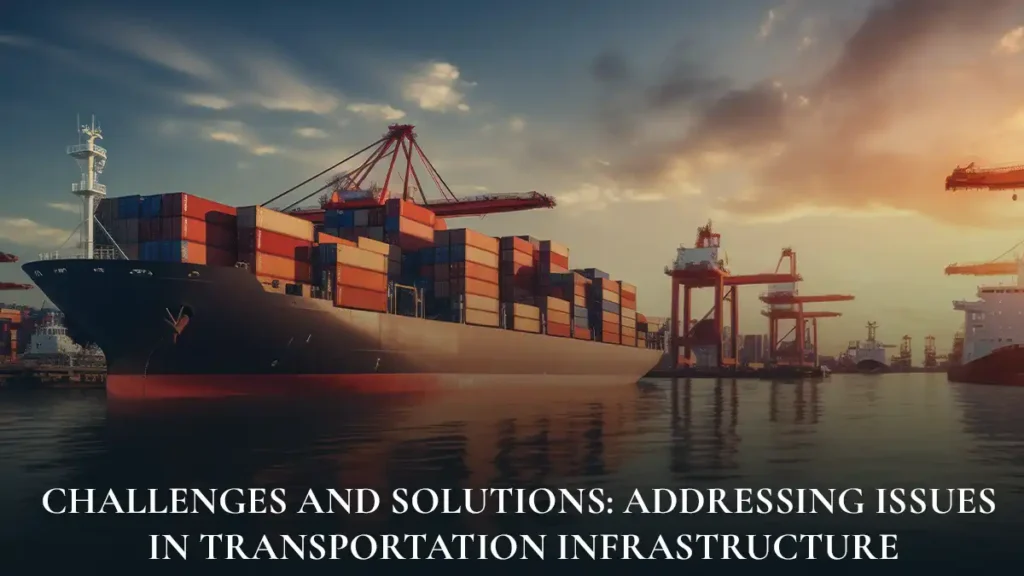

Addressing transportation infrastructure challenges demands innovative solutions to alleviate congestion, enhance safety, and improve efficiency. Investments in modernizing roads, railways, and airports are crucial for accommodating growing populations and increasing demands on transportation networks. Sustainable practices and innovative technologies can optimize infrastructure utilization and reduce environmental impacts.
The Future Frontier: Anticipating Trends and Innovations in Air and Sea Travel
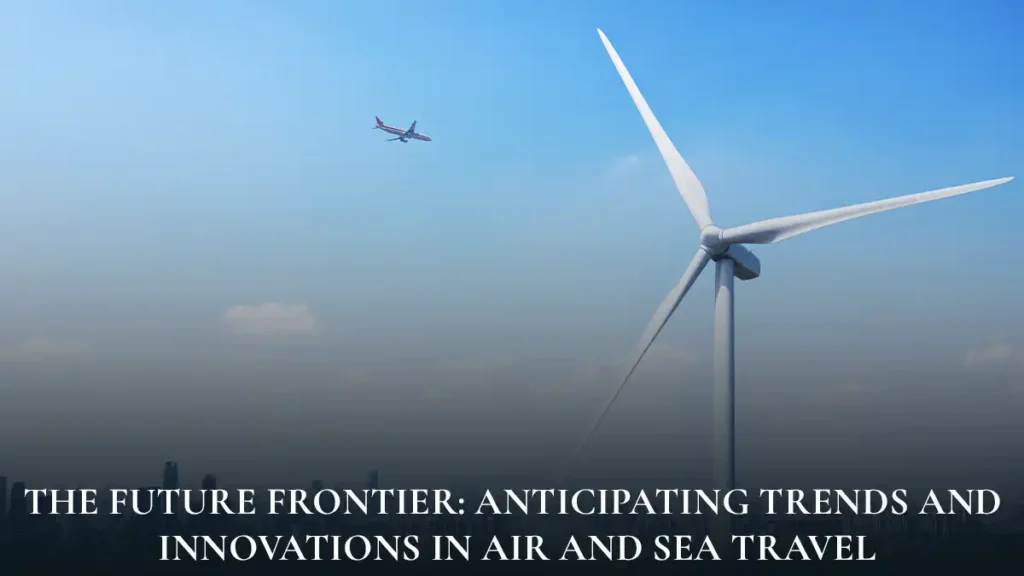

Anticipating the future of air and sea travel involves embracing technological innovations like electric propulsion, supersonic flights, and autonomous vehicles. Sustainable practices, virtual reality experiences, and space tourism are poised to redefine the travel landscape. They promise new horizons and unparalleled experiences for adventurers and explorers worldwide.
Conclusion:
In conclusion, air and sea travel remain indispensable components of our interconnected world. From their humble beginnings to their current state of sophistication, they continue to shape economies, cultures, and societies worldwide. However, as we embrace the opportunities they offer, we must also confront the challenges they pose. These range from environmental sustainability to safety concerns. By fostering innovation, collaboration, and responsible stewardship, we can ensure that future generations inherit a world where air and sea travel continue to enrich lives while preserving the planet. From historical voyages to future frontiers, discover the evolution, challenges, and innovations driving these essential modes of global connectivity.


Leave a Reply